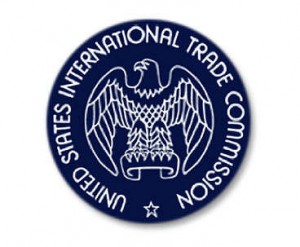FACT SHEET
- On December 20, 2017, the Department of Commerce (Commerce) announced its affirmative final determinations in the antidumping duty (AD) and countervailing duty (CVD) investigations of imports of 100- to 150-seat large civil aircraft (aircraft) from
- The AD and CVD laws provide U.S. businesses and workers with a transparent, quasi-judicial, and internationally accepted mechanism to seek relief from the market-distorting effects caused by injurious dumping and subsidization of imports into the United States, establishing an opportunity to compete on a level playing
- For the purpose of an AD investigation, dumping occurs when a foreign company sells a product in the United States at less than its fair value. For the purpose of a CVD investigation, a countervailable subsidy is financial assistance from foreign governments that benefits the production of goods from foreign companies and is limited to specific enterprises or industries, or is contingent either upon export performance or upon the use of domestic goods over imported
- Commerce based Bombardier, Inc.’s (Bombardier’s) final dumping margin on adverse facts available (AFA) because Bombardier failed to provide information requested by Commerce in its AD questionnaire. The Petitioner alleged one dumping margin in the petition. As AFA, Commerce applied the sole dumping margin calculated in the petition for Canadian exports of aircraft, which is 79.82 percent.
- Using reported information from the Governments of Canada, Quebec, and the United Kingdom and Bombardier’s reported information, Commerce calculated a final subsidy rate of 212.39 percent for Bombardier.
- Bombardier, the Government of Canada, and Petitioners agreed that the proposed transaction between Bombardier and Airbus does not impact these investigations. The proposed transaction has yet to be finalized.
- Upon publication of the final affirmative AD and CVD determinations, Commerce will instruct U.S. Customs and Border Protection (CBP) to collect cash deposits equal to the applicable final weighted- average dumping margin and the final subsidy
- The petitioner is The Boeing Company (IL).
- The scope of these investigations covers aircraft, regardless of seating configuration, that have a standard 100- to 150-seat two-class seating capacity and a minimum 2,900 nautical mile range, as these terms are defined
- “Standard 100- to 150-seat two-class seating capacity” refers to the capacity to accommodate 100 to 150 passengers, when eight passenger seats are configured for a 36-inch pitch, and the remaining passenger seats are configured for a 32-inch pitch. “Pitch” is the distance between a point on one seat and the same point on the seat in front of
- “Standard 100- to 150-seat two-class seating capacity” does not delineate the number of seats actually in a subject aircraft or the actual seating configuration of a subject aircraft. Thus, the number of seats actually in a subject aircraft may be below 100 or exceed
- A “minimum 2,900 nautical mile range” means:
- able to transport between 100 and 150 passengers and their luggage on routes equal to or longer than 2,900 nautical miles; or
- covered by a U.S. Federal Aviation Administration (FAA) type certificate or supplemental type certificate that also covers other aircraft with a minimum 2,900 nautical mile
- The scope includes all aircraft covered by the description above, regardless of whether they enter the United States fully or partially assembled, and regardless of whether, at the time of entry into the United States, they are approved for use by the
- The merchandise covered by these investigations is currently classifiable under Harmonized Tariff Schedule of the United States (HTSUS) subheading 8802.40.0040. The merchandise may alternatively be classifiable under HTSUS subheading 8802.40.0090. Although these HTSUS subheadings are provided for convenience and customs purposes, the written description of the scope of these investigations is
- Although Canadian aircraft subject to these investigations has not yet been imported into the United States, an April 2016 press release announcing the sale of Canadian aircraft to a U.S. airline valued the order to be in excess of $5
NEXT STEPS
- The ITC is scheduled to make its final determinations on or about February 1,
- If the ITC makes affirmative final determinations that imports of aircraft from Canada materially injure, or threaten material injury to, the domestic industry, Commerce will issue AD and CVD orders. If the ITC makes negative determinations of injury, the investigations will be
FINAL DUMPING MARGIN:
| COUNTRY |
|
DUMPING MARGIN |
| Canada |
Bombardier, Inc. |
79.82% |
FINAL SUBSIDY RATE:
| COUNTRY |
|
SUBSIDY RATE |
| Canada |
Bombardier, Inc. |
212.39% |
CASE CALENDAR:
| EVENT |
CVD |
AD |
| Petitions Filed |
April 27, 2017 |
April 27, 2017 |
| DOC Initiation Date |
May 17, 2017 |
May 17, 2017 |
| ITC Preliminary Determinations |
June 12, 2017 |
June 12, 2017 |
| DOC Preliminary Determinations |
September 25, 2017 |
October 4, 2017 |
| DOC Final Determinations |
December 18, 2017 |
December 18, 2017 |
| ITC Final Determinations |
February 1, 2018 |
February 1, 2018 |
| Issuance of Orders* |
February 8, 2018 |
February 8, 2018 |
NOTE: Commerce preliminary and final determination deadlines are governed by statute. For AD investigations, the deadlines are set forth in sections 733(b) and 735(a)(1) of the Tariff Act of 1930, as amended. These deadlines may be extended under certain circumstances.
*This will take place only in the event of affirmative final determinations from Commerce and the ITC.

Commentaires